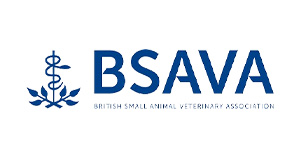Life Cycle of Liver Fluke
Defending Livestock
Published on: Oct 20, 2023
As a wet July/August ends, we will now start to look ahead to winter. This time of the year is where fluke starts to come to the forefront of farmers and vet’s minds alike. It is a parasite which is ideally suited to the English Autumn and Winter, as it loves wet ground.
The life cycle of Liver Fluke is complex.

For a ruminant to become infected, it must ingest herbage with the immature fluke stage on it. The mud snail generally spends most of its time on boggy ground or near water courses. A good method of prevention, therefore, is to fence off any areas like this to reduce snail-ruminant contact.
A key point about the fluke life cycle is the delay in development into adults once ingested by the ruminant. The it takes about 6-8 weeks for the adults to form in the bile duct. Therefore, the immature fluke ingested can cause disease if in high enough numbers usually around late summer to autumn. The adult fluke develops and cause disease in winter and early spring.
The signs of chronic fluke are condition loss for all ruminants, poor fertility/milk production in dairy cows, weak calves & high perinatal deaths in spring calving herds and bottle jaw in sheep. Acute infections can cause sudden death, it is usually only in sheep that we see signs of Acute Disease. If you notice any of these, please get in contact with the office or your vet.
There are multiple different tests we can use to identify a fluke problem at various stages of disease. One of the most sensitive tests is postmortem inspection, by vets or in the abattoir. We can also send faecal or blood samples to the lab. At different times of year, depending on stage of the Liver Fluke life cycle, we might suggest different types of testing. If fluke is diagnosed or causing clinical signs in your herd, it would be beneficial to treat.
With blanket treatment common, we are trying to make more sustainable decisions and try to reduce our worming/fluke treatments. This is key to ensure we have effective products available for when we need them most. Diagnosing a fluke burden before treatment is gold standard before any treatment is given.
If a fluke burden has not been diagnosed but the history and clinical signs all fit the fluke checklist, then a discussion with your vet is crucial to ensure the correct product is used. Triclabendazole products are the only product which treat immature fluke. We need to ensure we protect this medication and use it sustainably. In a chronically infected animal, other products should be used. As with all worming or fluke products, using combination products when not required will only predisposed to resistance. Resistance does occur and is likely to become more prevalent on farms in the future if sustainable practices aren’t followed.
In the battle against liver fluke, knowledge and strategy are our most potent weapons. By embracing sustainable practices, accurate diagnosis, and targeted treatments, we safeguard not only the health of our livestock but also the efficacy of our medications. Working in harmony with nature, and with the guidance of your vigilant veterinarians, we can navigate through liver fluke challenges, ensuring the well-being of our herds and flocks for years to come.

Author
Harry Connock
Fight liver fluke in ruminants! Learn about the parasite’s life cycle, its impact, and sustainable control methods like targeted treatment & diagnostics.
#WinterLivestockCare #FlukeSeason #RuminantHealth #SustainableFarming #Triclabendazole #PostMortemExam #BlanketTreatment #FaecalTests #BloodTests #HerdHealth #SheptonAndWellsVets #LiverFlukeLifeCycle











